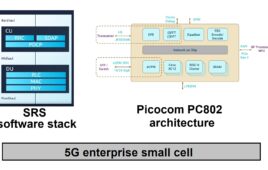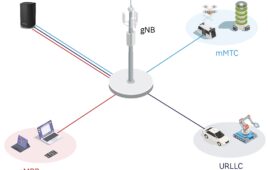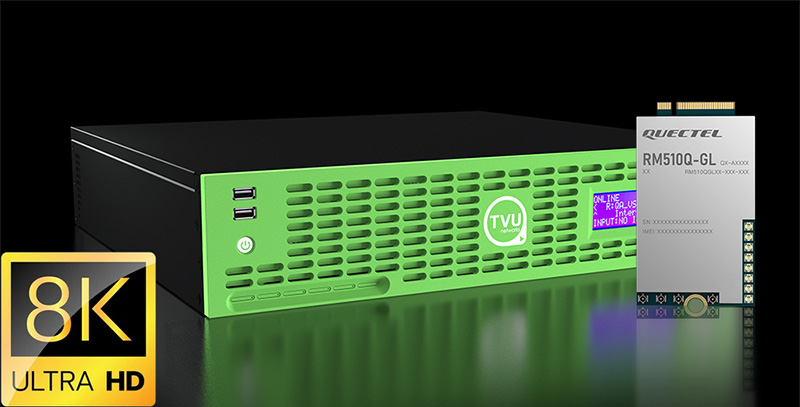Aviwest designs 5G wireless modules into its video communications products, bringing video wirelessly from cameras to production rooms.
Whether it’s news or sports, broadcasting from live events takes a lot of technology — and bandwidth — starting with getting a camera feed to a control room. 5G and private networks are changing the way video feeds make that trip to a studio or truck. Aviwest has added 5G connectivity to its line of mobile video transmitters for camera crews. The company’s PRO360 and PRO460 video transmitters use six 5G modem modules from Sierra Wireless to send video from TV cameras to production control rooms. 5G Technology World spoke with Ronan Poullanouec, CTO at Aviwest over Zoom to discuss how the company uses 5G modules and why the transmitter needs multiple modems.
Wireless video transmission lets cameras easily broadcast live action. Coverage is no longer tied to wires, although going wireless adds complexity and risk of lost connections. While news coverage can use HD (6 Mb/sec) video, the action of sports requires at least 15 Mb/sec using an H.265 encoder. That may not seem difficult for 5G to handle, so why does the transmitter need so many modems? It’s because of 4K video and now 8k video TVs.
“Sports require high quality and low latency,” said Poullanouec. “Sports needs 15 Mb/sec to 20 Mbit/sec, but 4k needs 50 Mb/s for a tier 1 video transmission, less for tier 2 and tier 3. Video quality and latency force a tradeoff. Reliability of signal transmission is essential. You never want to lose signal.” 5G, even at sub-6 GHz frequencies, isn’t always available, in which case the modules need to drop to 4G. On top of that, broadcasters get the bandwidth they need through aggregation of more than one cellular signal. The wireless modules connect to networks from more than one wireless carrier, which can keep a stream coming should one signal fail. The transmitter also has Wi-Fi and Ethernet capabilities to use when they’re available.
Poullanouec also explained that using multiple wireless modules can reduce energy consumption. That may seem counterintuitive, but he said that having several wireless connections lets the transmitter make the best use of available signals. That is, the transmitter will adjust data rates to among the connections to maximize its battery life. It also adjusts transmit power as needed. It will also use only as many 5G modules as needed. Figure 1 shows the transmitter’s rear-panel I/O ports.

Figure 1. The Aviwest PRO460 transmitter’s rear panel includes a serial digital interface (SDI post for connecting to cameras, plus Ethernet, HDMI, and USB ports.
The transmitter also provides power to the camera and the two can consumer as much as 60 W. “With all transmitters running at pull power, explained Poullanouec, “a battery would last for ten minutes. Journalists will typically travel with two or three batteries because of weight and limits on the number of batteries can carry onboard aircraft.”
Design issues

Figure 2. The PRO460 has vents at both ends of its case.
Energy consumption is on everyone’s mind; heat and size relate to energy consumption. That’s Why Aviwest needed twelve electrical and mechanical engineers to design the transmitters. “You can’t design electronics, then do the mechanical design,” said Poullanouec. The transmitter uses fans to cool the electronics. Figure 2 shows some of the vents. Aviwest has a smaller version of the transmitter, which has two cellular modules. With just two, the transmitter less heat and uses heat pipes dissipate it.
Interference can also plague designers of wireless equipment. “The 2.4 GHz Wi-Fi frequency is close to the 2.6 GHz LTE band. Because of their compared to Wi-Fi higher power, 4G and 5G will disturb Wi-Fi.” To minimize internal interference, the transmitter use four cellular antennas and two Wi-Fi antennas located as far apart in the unit as possible. Two cellular Antennas are located at each of the case. When using both cellular and Wi-Fi, the transmitter will try to use 5 GHz Wi-Fi when available to minimize interference.
“We designed the antennas ourselves rather than purchase them,” said Poullanouec. “Doing so provides better coupling.” The transmitter uses rigid and flex PCB antennas, which Poullanouec says provide the best performance.




Quectel announced an application for 5G modules in a video transmitter.

https://www.quectel.com/news-and-pr/quectels-5g-mmwave-module-selected-by-tvu-networks-to-support-5g-8k-video-transmitter